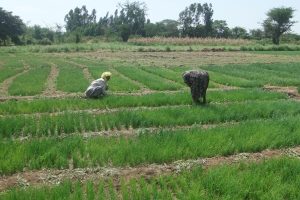Actions to address different forms of malnutrition are typically managed by separate communities, policies, programmes, governance structures, and funding streams. By contrast, double-duty actions, which aim to simultaneously tackle both undernutrition and problems of overweight, obesity, and diet-related non-communicable diseases (DR-NCDs) have been proposed as a way to effectively address malnutrition in all its forms in a more holisitic way. This Series paper identifies ten double-duty actions that have strong potential to reduce the risk of both undernutrition, obesity, and DR-NCDs. It does so by summarising evidence on common drivers of different forms of malnutrition; documenting examples of unintended harm caused by some undernutrition-focused programmes on obesity and DR-NCDs; and highlighting examples of double-duty actions to tackle multiple forms of malnutrition. We find that undernutrition, obesity, and DR-NCDs are intrinsically linked through early-life nutrition, diet diversity, food environments, and socioeconomic factors. Some evidence shows that programmes focused on undernutrition have raised risks of poor quality diets, obesity, and DR-NCDs, especially in countries undergoing a rapid nutrition transition. This Series paper builds on this evidence to develop a framework to guide the design of double-duty approaches and strategies, and defines the first steps needed to deliver them. With a clear package of double-duty actions now identified, there is an urgent need to move forward with double-duty actions to address malnutrition in all its forms. Read the article.
